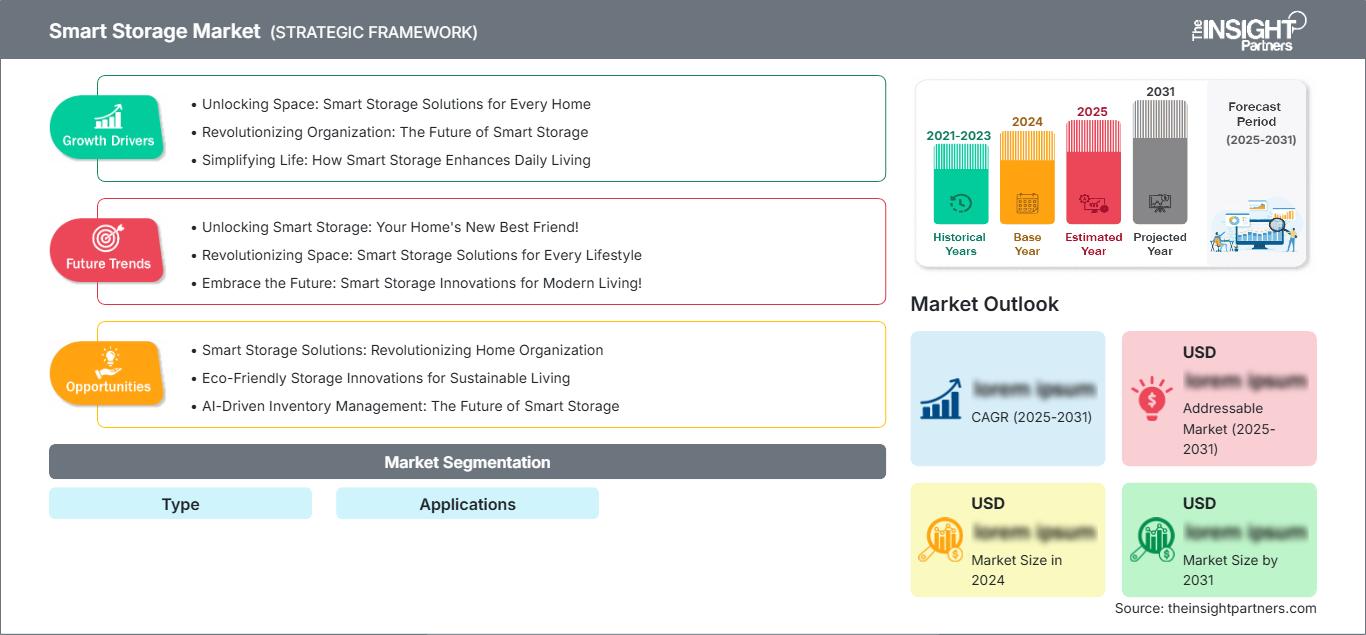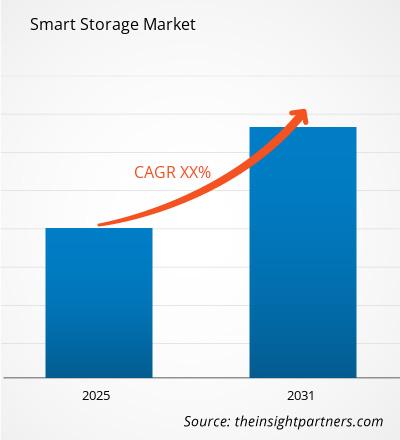À l'heure actuelle, face à la collecte massive de données dans différents secteurs d'activité et sous différentes formes, la principale préoccupation de tout secteur est la sécurisation du stockage de ces données essentielles. Face à l'augmentation de la taille des fichiers et à la quantité importante de données volumineuses et non structurées, les entreprises informatiques et technologiques sont confrontées à des défis majeurs lorsqu'elles gèrent d'importants volumes de données. Les solutions de stockage intelligentes offrent des solutions rapides, fiables, sécurisées, évolutives et économiques, adoptées à un rythme accéléré dans divers secteurs d'activité afin de répondre aux besoins ou de trouver des solutions pour un stockage et une récupération efficaces des données. Les technologies intelligentes telles que les systèmes automatisés, l'Internet des objets (IoT), le cloud computing, le e-commerce, etc., sont les principaux moteurs de la demande croissante de stockage de données. L'essor des marchés axés sur les données donnera naissance à de nouvelles approches en matière d'exploitation des données, favorisant ainsi la pénétration croissante des solutions de stockage intelligentes dans presque tous les secteurs. Hewlett Packard (Hp), une entreprise informatique, a lancé une clé USB abordable et plus rapide. Cette innovation est diversifiée et permet à presque tous les secteurs d'exploiter facilement l'énorme volume de données. Les techniques traditionnelles de stockage de données ne parviennent pas à gérer les volumes importants de données produits quotidiennement. La technologie du Big Data, en plein essor, a entraîné une multiplication des périphériques d'entrée et de sortie, ce qui influence positivement le marché du stockage intelligent. Aujourd'hui, les secteurs d'activité tels que la santé, l'automobile, l'électronique grand public, les médias, l'industrie et bien d'autres se tournent de plus en plus vers le stockage et la récupération de données. Cette tendance renforce le besoin de systèmes de stockage avancés, plus fiables, plus sécurisés et plus faciles à déployer, ce qui entraîne une demande croissante de techniques de stockage intelligentes. Le marché du stockage intelligent est largement divisé en différents segments, notamment la technologie, les applications, les secteurs d'utilisation et la géographie. Ce segment technologique est également subdivisé en baies de stockage flash, le stockage de données holographiques, la reprise après sinistre dans le cloud, les baies hybrides, l'enregistrement magnétique assisté par la chaleur, etc. Les principales applications du stockage intelligent devraient être associées aux entreprises, au stockage Big Data et aux services de stockage dans le cloud. La pénétration croissante des applications pilotées par les données auprès des utilisateurs finaux, tels que les secteurs industriel, médical, électronique grand public, automobile et autres, a entraîné la mise en œuvre d'infrastructures de données sophistiquées et de systèmes de traitement de données haut de gamme. Cela a entraîné une augmentation des investissements dans le développement des centres de données. Le marché mondial du stockage intelligent est également divisé en deux régions : Amérique du Nord, Europe, Asie-Pacifique, Amérique du Sud, Moyen-Orient et Afrique. L'Amérique du Nord est considérée comme l'une des principales régions du marché du stockage intelligent, suivie de l'Europe et de la région Asie-Pacifique. D'ici 2031, la région Asie-Pacifique devrait contribuer de manière significative au marché du stockage intelligent grâce à l'évolution des plateformes de données et aux nouvelles implantations d'entreprises. L'automatisation industrielle croissante est également l'un des moteurs de l'adoption croissante des dispositifs de stockage intelligents dans les applications industrielles. Parmi les principaux acteurs du marché du stockage intelligent figurent IBM Corporation, HP Enterprises, NetApp, Inc., Dell Inc., Toshiba Corporation, Hitachi Data Systems, SimpliVity Corporation, Sandisk Corporation, Quantum Corporation et Micron Technology, entre autres.
Vous bénéficierez d’une personnalisation sur n’importe quel rapport - gratuitement - y compris des parties de ce rapport, ou une analyse au niveau du pays, un pack de données Excel, ainsi que de profiter d’offres exceptionnelles et de réductions pour les start-ups et les universités
Marché du stockage intelligent: Perspectives stratégiques

-
Obtenez les principales tendances clés du marché de ce rapport.Cet échantillon GRATUIT comprendra une analyse de données, allant des tendances du marché aux estimations et prévisions.
Aperçu régional du marché du stockage intelligent
Les tendances régionales et les facteurs influençant le marché du stockage intelligent tout au long de la période de prévision ont été analysés en détail par les analystes de The Insight Partners. Cette section aborde également les segments et la géographie du marché du stockage intelligent en Amérique du Nord, en Europe, en Asie-Pacifique, au Moyen-Orient et en Afrique, ainsi qu'en Amérique du Sud et en Amérique centrale.
Portée du rapport sur le marché du stockage intelligent
| Attribut de rapport | Détails |
|---|---|
| Taille du marché en 2024 | US$ XX million |
| Taille du marché par 2031 | US$ XX Million |
| TCAC mondial (2025 - 2031) | XX% |
| Données historiques | 2021-2023 |
| Période de prévision | 2025-2031 |
| Segments couverts | By TaperBy Applications |
| Régions et pays couverts |
Amérique du Nord
|
| Leaders du marché et profils d'entreprises clés |
|
Densité des acteurs du marché du stockage intelligent : comprendre son impact sur la dynamique des entreprises
Le marché du stockage intelligent connaît une croissance rapide, portée par une demande croissante des utilisateurs finaux, due à des facteurs tels que l'évolution des préférences des consommateurs, les avancées technologiques et une meilleure connaissance des avantages du produit. Face à cette demande croissante, les entreprises élargissent leur offre, innovent pour répondre aux besoins des consommateurs et capitalisent sur les nouvelles tendances, ce qui alimente la croissance du marché.

- Obtenez le Marché du stockage intelligent Aperçu des principaux acteurs clés
- Analyse historique (2 ans), année de base, prévision (7 ans) avec TCAC
- Analyse PEST et SWOT
- Taille du marché Valeur / Volume - Mondial, Régional, Pays
- Industrie et paysage concurrentiel
- Ensemble de données Excel
Rapports récents
Rapports connexes
Témoignages
Raison d'acheter
- Prise de décision éclairée
- Compréhension de la dynamique du marché
- Analyse concurrentielle
- Connaissances clients
- Prévisions de marché
- Atténuation des risques
- Planification stratégique
- Justification des investissements
- Identification des marchés émergents
- Amélioration des stratégies marketing
- Amélioration de l'efficacité opérationnelle
- Alignement sur les tendances réglementaires






















 Obtenez un échantillon gratuit pour - Marché du stockage intelligent
Obtenez un échantillon gratuit pour - Marché du stockage intelligent